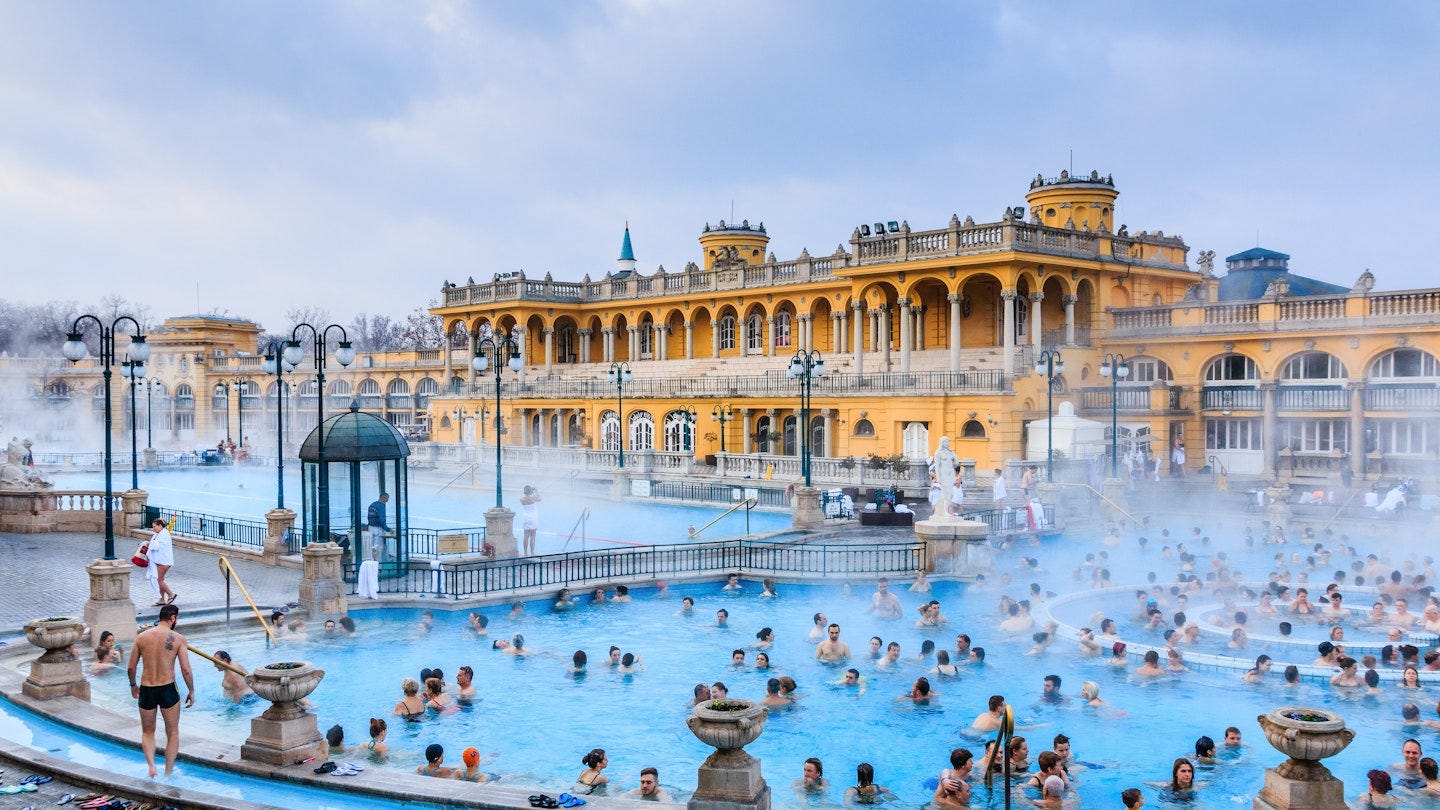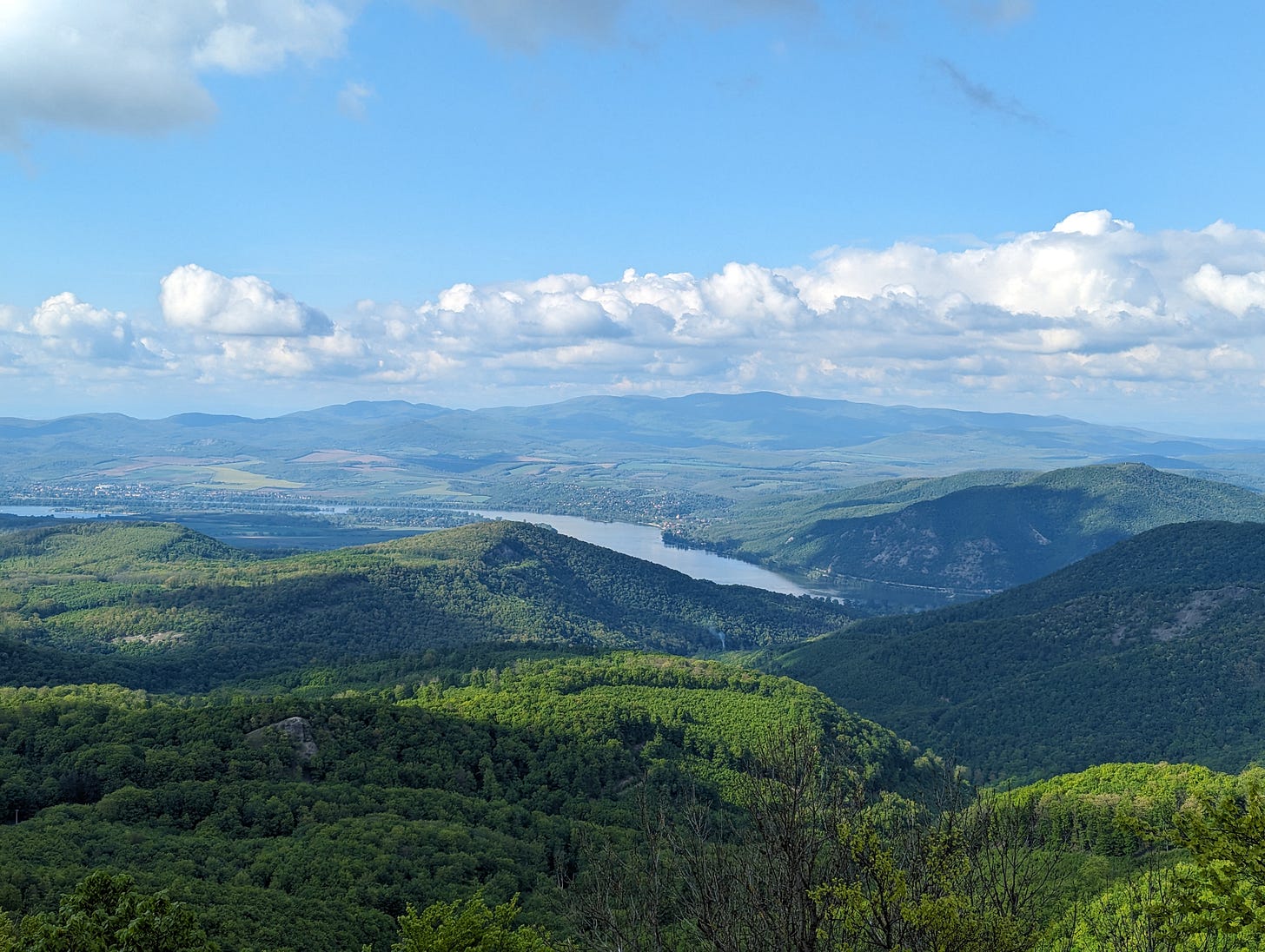Deep Adaptation & The Right to Collapse
My experience at the World Adaptation Forum in Budapest, Hungary
I recently returned from Budapest, Hungary where I attended the World Adaptation Forum, a gathering organized by the Hungarian Deep Adaptation community. Because the Deep Adaptation framework is quite new to most people, I want to describe my experience at the Forum and share some related thoughts about how power structures suppress dialogue on subjects such as collapse. Ready? OK, let’s go!
What is Deep Adaptation?
Deep Adaptation (DA) is a concept, agenda, and social movement that enables loving responses to societal collapse. Societal collapse describes the ending of our modern ways of sustaining human life and includes limited or nonexistent access to food, shelter, and safety, as well as the failure of institutions, governments, and social structures. People within the movement view collapse as likely, inevitable, or already happening. They call for an honest reckoning of where we are collectively and action in order to “soften the landing”.
To be clear, DA is not a “white-flag I give up” stance. It believes that an honest understanding of our predicament invites us to radically transform the way we live our lives, find meaning, and identify. This transformation and the resulting changes are unique to each person and community, which is why it does not have a political agenda, although it tends to favor decentralization, community-ownership, and the protection of human rights. DA was first elaborated by Jem Bendell in his 2018 essay “Deep Adaptation” and further elaborated in his 2023 book, Breaking Together: A Freedom-Loving Response to Collapse (which remains the most comprehensive resource on the subject).
Now, if you are like me, you have been raised with a deep belief in progress, a trust that things will work, that something - government, technology, human ingenuity, karma - will allow the story of our civilization to go on. I like to think of DA as a gathering of individuals who have lost that trust. A metaphor comes to mind: we are all in a car; those at the front are arguing over which radio station should be playing without realizing that the car is speeding towards a brick wall.
None of this is to deny that there are wonderful things happening in the world - courageous people leading amazing initiatives - or that within collapse lie the seeds of regeneration. Instead, it’s to recognize that positive impact can only be grounded in an awareness of the full amplitude of our predicament. It’s what Jem calls “sacred pessimism,” which involves letting go of our desire for control and our expectations of how the world should be, so that we can live more intentionally and in alignment with our values. This is a spiritual journey well captured in the words of Tibetan Buddhist teacher Chogyam Trungpa: “The bad news is you’re falling through the air, nothing to hang on to, no parachute. The good news is, there’s no ground.”
Why Hungary?
At the World Adaption Forum in Budapest, I learned that Hungary has the highest number of DA members of any country in the world - about 20,000. Why? The short - and obviously not definitive - answer is that Hungarians have a long tradition of pessimistic thinking that lends itself well to the DA framework (although I want to emphasize that I do not think DA is a pessimistic lens in and of itself). Let me explain.
Hungarians have lived through their own form of collapse for over 500 years. In 1526, the country was invaded by the Ottoman Turks, who ruled until 1686, when the Austrian monarchy took over. Between 1867 and 1918, as part of the Austro-Hungarian Empire, the country saw massive economic growth - and huge inequality - that enabled the magnificent architecture and infrastructure on display in the capital, Budapest, today. After WWI and losing two-thirds of its territory, Hungary lived a civil war, a fascist regime, genocide in WWII, and occupation by the Soviets. The Soviet era (1949-1989) featured less inequality but a total crackdown on freedoms. The transition from Soviet rule to democratic Hungarian rule led to the unequal privatization of the little wealth the state ever had. Now, as an EU member, Hungary must comply with the centralizing, liberal policies of the EU, a tension that clever politicians such as the current prime minister, Viktor Orban, exploit for personal gain.

This is the story that multiple Hungarians shared with me to explain why Hungarians feel pessimistic. Deep Adaptation provides a framework that, for many Hungarians, resonates with their long history of political breakdown at the mercy of outside forces.
How Power Limits Freedom of Thought
Hungary’s history is a reminder that collapse is not something entirely new. Colonization destroyed the cultures and life-worlds of indigenous cultures. Although many of these cultures persist (and many don’t), this was a type of collapse, an end of the world for them. Some nuance is needed here: we have to differentiate the collapse of local/regional traditional cultures from the global, human-species-threatening collapse we face today.
Dominant cultures have a lot to learn from cultures that have already experienced breakdown. You see, it’s much harder to fathom the possibility or reality of collapse if you benefit from the system. Same-day Amazon deliveries don’t make resilient individuals. They induce psycho-spiritual vulnerability, a desire for comfort and security, and an incapacity to bear challenges to one's own power and privilege, a condition that some refer to as “white fragility.” It’s that fragility that makes Americans the least likely out of rich countries to consider climate change a real threat.
I find it unsurprising that Hungary has the world’s largest DA community. In my experience, it’s usually outside the halls of power that real introspection and critique can happen. Freedom of thinking lives on the edges of culture rather than at the center. That is because power centralizes and homogenizes. Colonization, for example, wants the colonized to fit into its own vision of civilization. To find the juicy content, rambunctious radical thinkers, we have to look to the margins, in the cracks, at the ruderal zones and ecotones.
Collapse remains taboo in conventional discourse because it denies the legitimacy of existing power structures. Hungary’s history, and its location at the edges of Western power, gives it a certain freedom of thought. How else can you explain that the conference was hosted by the National University of Public Service? In his opening talk, the rector of the university shared rather matter-of-factly that “the goal of global sustainability will give way to the goal of local resilience,” and that the role of the state and its public servants was to empower local communities in the face of social-political breakdown. I simply cannot imagine that type of discourse coming from the leadership of any American university.
One of the core values of Deep Adaptation is open communication. We don’t have to agree with each other, but we have to at least be able to express valid concerns about the possibility of human extinction and the breakdown in social order (this issue of freedom of expression has exploded into clarity in the last few days with the Palestinian solidarity encampments happening on US campuses). I think this is a key and often overlooked point: Deep Adaptation does not predict the future. Instead, it calls for open conversation about it that can help us prepare for likely scenarios. From an archetypal psychology perspective, it’s a call to face our shadows, rather than only be subsumed by the light. In his book, Breaking Together, Jem has a whole chapter dedicated to the “right to collapse,” that is the freedom to accept, feel, and integrate the breakdown of modern society. It’s a powerful and necessary phrasing. As open communication about collapse/polycrisis gets funneled into the orderly paradigms of mainstream agendas, it becomes crucial to shed old beliefs about where we are all headed.
Conference Highlights: Children’s Rights, Degrowth, and the Trading Floor
I want to highlight three moments from the conference that really stuck out for me. First, in her talk, “They Know It,” Hungarian child rights lawyer Szilvia Gyurko passionately defended the right of children to be informed about what is happening in the world. Children are keenly aware of what is happening on an emotional level. Hiding this from them damages the core relationship of trust and honesty needed for healthy individuation. Lying and sugar-coating damage childrens’ basic sense of trust in the world, making it extra hard for them to really engage with the world as it is. Children, Szilvia, emphasized repeatedly, “have a right to know not because they are the future, but because they are the present”. We build the future in the present. Shielding the next generation from reality does not protect children. In fact, it is self-serving for adults and perpetuates taboos.
Second, I was interested in what Jem Bendell had to say about the relationship between degrowth and DA. Jem’s issue with degrowth is that the movement has no practical policy proposals that a government would ever accept. If you want to degrow wealthy economies, according to Jem, your best bet is not to call for your government to downsize the economy, but instead to promote solidarity with the global south. It is the continued extraction of resources from the global south that feeds waste and overconsumption in the global north. Today, developing countries are forced to accept terrible terms of trade, selling off large parts of their natural capital to foreign companies and governments, in order to receive a pittance which they then use to pay off their debt to rich countries. If we really want degrowth, according to Jem, the best thing we can do is support anti-imperial movements in the global south.
Finally, Matthew Slater led an embodied workshop called the Trading Floor Game in which participants - armed with playing cards (assets) and white paper (money) - were able to see how trade was affected by the availability of money, and how outside control of the money supply can be counterproductive to a local economy. See the video below to get an idea of the exercise. By somatically reproducing macroeconomic trends in the space of a classroom, we were able to see and feel how perverse incentives in our financial system create the zero-sum game at the heart of our existential economy. Without radical government intervention, it’s difficult to see how this can change.
When I spoke with Matthew after the workshop, I asked whether he felt hopeful that capital invested in extractive industries can be transitioned towards regenerative ones. In short, his answer was no, because, although there is a rising tide of financial mechanisms dedicated towards transitioning capital (I’m thinking of my friend Samantha Power’s Bioregional Financing Facilities), most financial actors are still focused on making a quick buck whilst the world burns around them. Matthew’s work - outside of leading these workshops - focuses on creating the digital software for community-managed local currencies and economies. Typical of the DA ethos, he is more interested in empowering local communities with a financial system they have autonomy over, rather than work through centralized financial mechanisms that he believes are doomed to fail.
These are only a few short snippets from a long weekend. I hope this has helped clarify what Deep Adaptation is about, and how power works against our very capacity to consider collapse. I’ll close with a picture I took on my final day in Hungary, on a hike about 20 kilometers north of Budapest. That’s the Danube River - the second longest in Europe - winding its way through a landscape in full bloom. After a long few days thinking about collapse, it was a relief to immerse myself in a forest brimming with life energy.





For historical reasons (Croatia and Hungary used to share a state, and we are now back together in the EU), I belive we share some inclination to healthy pessimism in Croatia :)
Thank you for bringing this here @Felix. Question: is there a version of this piece available that is not white text on black background? I find reading blocks of white on black very challenging so I'm only able to read it in small doses, but I am curious to learn more.
This is a common readability challenge -- I'm not sure why substack has a setting where writers can publish like this.